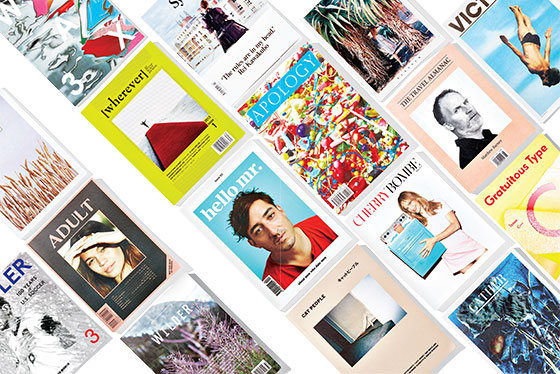
Victory
The magazine is devoted to sport, and each issue takes a theme—the latest being water. There’s an archival photo of Jacques Cousteau, a profile of pro surfer Derek Hynd, and black-and-white underwater shots by photographer and free diver Kanoa Zimmerman. Quarterly; $5.
System
A fashion magazine for fashion people. The second issue has an interview with the elusive Comme des Garçons designer Rei Kawakubo and advertisers like Prada, Chanel, and Dior. Its debut cover had the first in-depth interview with Nicolas Ghesquière after he exited Balenciaga. Founders Alexia Niedzielski and Elizabeth von Guttman (of Industrie and Ever Manifesto) operate a creative studio in Paris, which provided early funds, and run the magazine with fashion-mag professionals Jonathan Wingfield (Numéro) and Thomas Lenthal (Paradis). Biannual; $18.
[wherever]
Founding editor Rawan Hadid was born in the United States to Palestinian parents, grew up in Qatar, and then went to school in Montreal and New York. So it’s not too surprising that [wherever], which launched this year in Manhattan (where Hadid is now based), is a (loosely speaking) travel magazine more about an ambiguous idea of place and movement than it is about what to do or where to stay. Three times a year; $15.
Cherry Bombe
This New York–based magazine devoted to women, food, and fashion was founded by Kerry Diamond and Claudia Wu, who have long résumés in food, fashion, and PR. Their second issue, fresh off the presses and now with Madewell as the sponsor (they used Kickstarter the first time), features interviews with and profiles of women as varied as Jessica Seinfeld and Alice Waters. Biannual; $18.
Gratuitous Type
Typographers need their own magazine, too. “GT is a pamphlet of typographic smut,” reads the title page. In its third issue, devoted to color, creator Elana Schlenker, a graphic designer based in Greenpoint, gives a six-page centerfold to a set of rainbow-hued numbers by French designer Marine Duroselle. Annual; $18.
Howler
In 2012, former book editor George Quraishi and former GQ editor Mark Kirby, who were part of the same soccer league, launched Howler, a magazine exclusively about the game, with writing by such soccer fans as Robert Andrew Powell, Reif Larsen, and Aleksandar Hemon. Quarterly; $15.
Cereal
Over in Bristol, England, Rosa Park and Rich Stapleton have made a sleek, minimalist journal loosely centered on food and travel, which their mission statement describes as “the significant elements of a good life.” The couple first bonded over their love of photography; hence the striking portfolios of grains and rice by Jonathan Gregson and Stephen Lenthall. Quarterly; $13.
Gather
A literary-minded journal about food and cooking. The summer issue, which was movie-themed, features a recipe for Eton mess, in homage to Tilda Swinton’s tangled love affair in Luca Guadagnino’s I Am Love. Biannual; $19.99.
Hello Mr.
“For men who date men”; launched earlier this year by 26-year-old Ryan Fitzgibbon, with $26,000 from a Kickstarter campaign and his own savings. Fitzgibbon felt that there wasn’t a magazine out there that directly spoke to the type of twentysomething gay man he identified with; Hello Mr. is neither overtly sexual or particularly political. Biannual; $20.
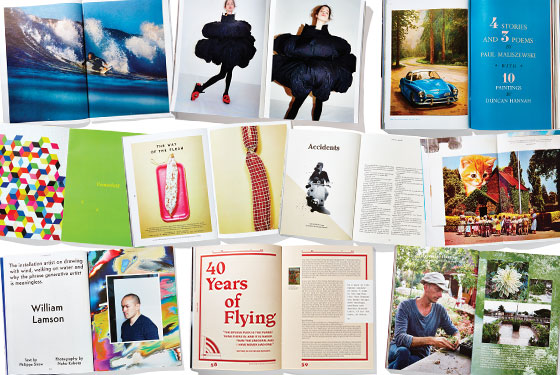
Cat People
Editors Jessica Lowe and Gavin Green are based in Melbourne, but launched their publication about all things feline this September in both Japanese and English because Lowe wanted the magazine to reach an audience in Japan, where, she says, “they are just obsessed with cats!”Annual; $30.
The Travel Almanac
With Matthew Barney on the latest cover and interviews with Juergen Teller and Ian Schrager inside, this handsome, male-centric magazine, out of Berlin, is more about how to travel than where to go. Biannual; $18.
Synonym
Oh, to be young and live in Austin, Texas! Leigh Patterson and Amelia Giller’s literary magazine feels like the equivalent of a pretty indie band—there’s a sweet seriousness to digging up your juvenile poetry and annotating it six years later, as writer Leah Finnegan does. Biannual; $18.
Wax Magazine
Designed for “urban surfers,” Wax has the vibe of a perfectly rundown beach shack. Greenpoint-based David Yun and his wife, Aeriel Brown, came up with the idea while “lying on a New York beach between surf sessions.” Biannual; $18.95.
Adult
The first issue reads as if The Paris Review married Hustler. Erotic photography by Kava Gorna runs alongside an art portfolio by Wangechi Mutu. Literary phenom Rachel Kushner shares her e-mails; Katherine Bernard pens an essay about Erica Jong’s Fear of Flying. Three times a year; $20.
Apology
Jesse Pearson’s new magazine is distinctly (and unapologetically) his—a little odd, but in a likable way. The second issue, with a striking cover by Roe Ethridge, includes an interview with Jackie Collins, a fictional conversation between author Eileen Myles’s dog and a puppet named Oscar, and a portfolio (shot by Aileen Son) of dishes created by Del Posto pastry chef Brooks Headley that parallel his favorite moments in Black Flag’s discography. Quarterly; $18.
Wilder
Forget the suburban vegetable patch: This is a gardening magazine for those who have to make do with fire escapes and brownstone rooftops. The latest issue offers instructions on how to grow a prickly-pear cactus in your apartment. Quarterly; $18.95.
Most of these titles are available at niche magazine shops and indie booksellers like McNally Jackson Books, Spoonbill and Sugartown Booksellers, Casa Magazines, Soho News International, the Magazine Bazaar, and Lafayette Smoke Shop.*
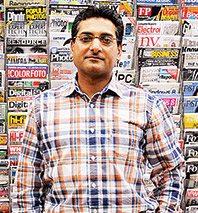
Ask a Shop Clerk: Hemal Sheth
*Lafayette Smoke Shop, 63 Spring St., at Lafayette St.; 212-226-3475.
How are sales these days?
The golden time was from 1997 to 2003. But there’s still a market. Vogue sells out in every language.
Have you seen any celebrity customers shopping for the magazines they’re photographed in?
Yes. Naomi Campbell—so many times.
So You Want to Start a Magazine
Here’s how—and why—four people did it.
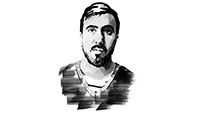
Jesse Pearson, 38, Manhattan
Apology
“I couldn’t do what I’m doing with Apology in a traditional magazine world—I had to go off on my own to do it. Apology isn’t really that concerned with current events or current artistic or literary releases. It’s—I’m trying to think of a less horrible word than evergreen. Before, I was an editor at Vice, and, yeah, there is a certain kind of cynicism that grows out of being in that world. Apology is about being expansive and curious in literature and art. Issue No. 1 was funded from my own savings and ads. Issue No. 2 was from the sales of the first issue and advertisers. I have had offers from investors, but none of them is the right one. One of my guiding principles is to not be afraid and be kind of weird.”
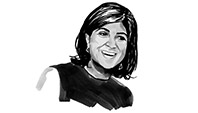
Rawan Hadid, 28, Manhattan
[wherever]
“I felt there was something missing from travel writing—it’s not just about hitting up the five top restaurants in London and getting the best croissants in Paris or whatever usually comes to mind when you’re looking at a glossy travel magazine. I was trying to think about travel a little bit more critically and reflect the experiences of different people. Of course, launching a new print magazine is a risky move, but plenty of people continue to do it. Honestly, it started as a bare-bones effort. I asked a few people I knew in ad sales (I had worked in the past as the communications director for another independent magazine called Kalimat) for advice, scoured other magazines to see who had print budgets and was a good fit, and set to work calling, e-mailing. I didn’t get to sleep much.”
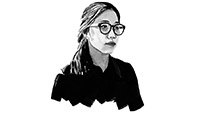
Rosa Park, 29, Bristol, England
Cereal
“The magazine isn’t about cereal; it’s about travel and food and the lifestyle that goes with it. The name is an inside joke between my partner, Rich Stapleton, and me. We both love eating cereal—for breakfast, lunch, and dinner!—and when we first met, we talked about our mutual memory of reading the back of cereal packets at breakfast. I grew up in Vancouver and Seoul. I moved to New York where I worked in the fashion-and-beauty-PR industry, which I did for about five years, and decided to leave to pursue a master’s in English literature at the University of Bristol, which is what brought me here. Being the editor of Cereal is my full-time job right now. We secured private funding for Cereal before we began work on the magazine, which is what’s currently taking care of our publishing costs.”
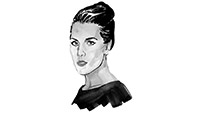
Sarah Nicole Prickett, 28, Brooklyn
Adult
“What we’ve made is not really pornographic. It’s erotic. It’s literary. Those two elements haven’t coexisted very well together in a long time. I am very restless. If I’m in too much of a literary milieu, I’ll totally freak out about how unsexy everyone is. But if I go to a fashion party, I’m like, ‘Can anyone here read?’ We’re not making money now; we have a digital strategy that will eventually make us money—I don’t want to retire rich from this, but I do want to pay my writers. For the first issue, some of my friends did stuff for me because they wanted to; some writers we paid. Noah Wunsch, our publisher, convinced a few chill marketing directors to take a chance on us. I don’t know how to relax. But I think it’s the same for everybody, right? Everyone is working too much and not enough. ”